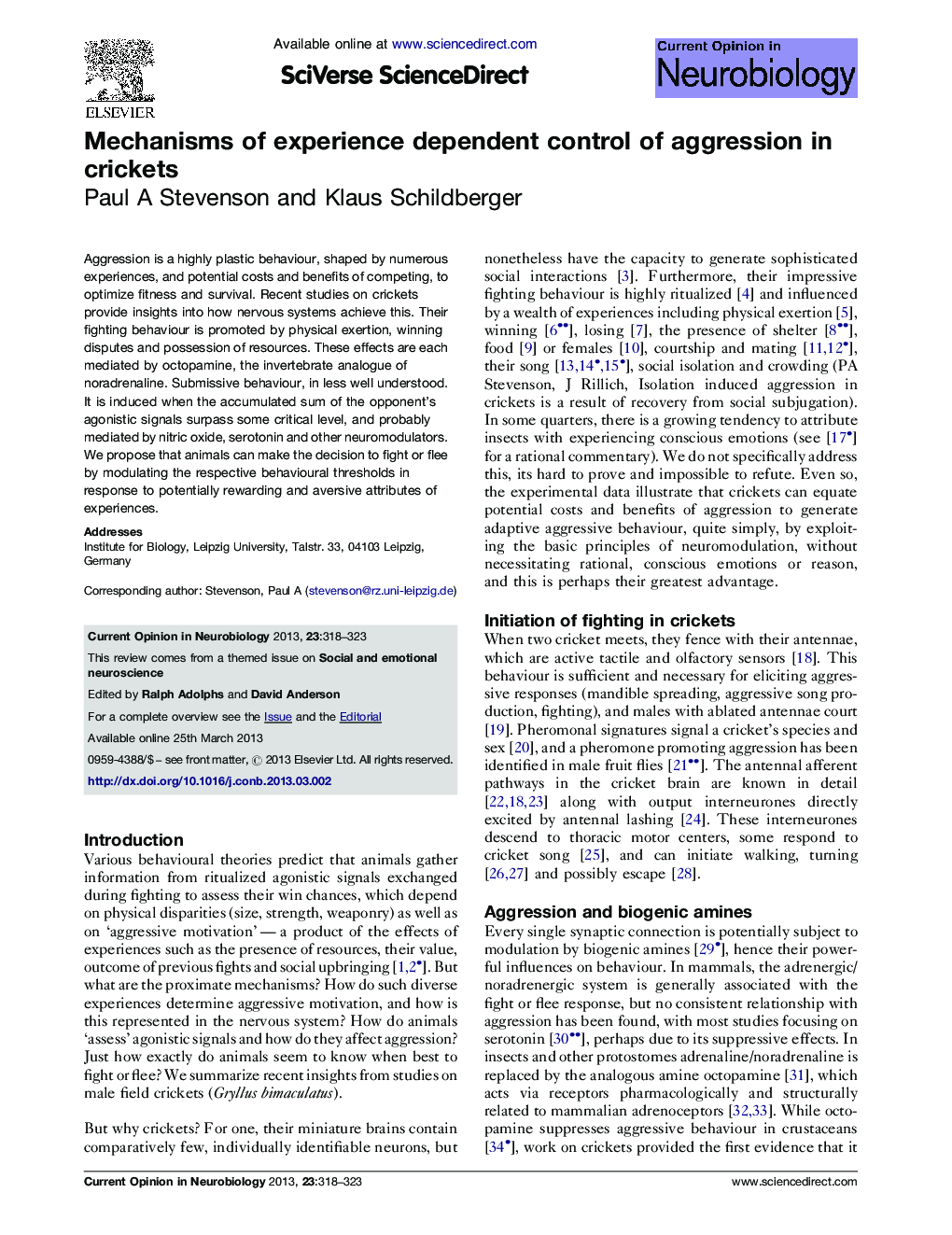| کد مقاله | کد نشریه | سال انتشار | مقاله انگلیسی | نسخه تمام متن |
|---|---|---|---|---|
| 6267162 | 1294931 | 2013 | 6 صفحه PDF | دانلود رایگان |
- Cricket aggression is promoted by physical exertion, winning and resources.
- Each of these effects is mediated by octopamine (noradrenaline analogue).
- A cricket flees when the sum of its opponent's agonistic actions exceed some threshold.
- Nitric oxide and other modulators are involved in mediating submissiveness.
- Modulation of relative thresholds seems to underlie the decision to fight or flee.
Aggression is a highly plastic behaviour, shaped by numerous experiences, and potential costs and benefits of competing, to optimize fitness and survival. Recent studies on crickets provide insights into how nervous systems achieve this. Their fighting behaviour is promoted by physical exertion, winning disputes and possession of resources. These effects are each mediated by octopamine, the invertebrate analogue of noradrenaline. Submissive behaviour, in less well understood. It is induced when the accumulated sum of the opponent's agonistic signals surpass some critical level, and probably mediated by nitric oxide, serotonin and other neuromodulators. We propose that animals can make the decision to fight or flee by modulating the respective behavioural thresholds in response to potentially rewarding and aversive attributes of experiences.
157
Journal: Current Opinion in Neurobiology - Volume 23, Issue 3, June 2013, Pages 318-323
